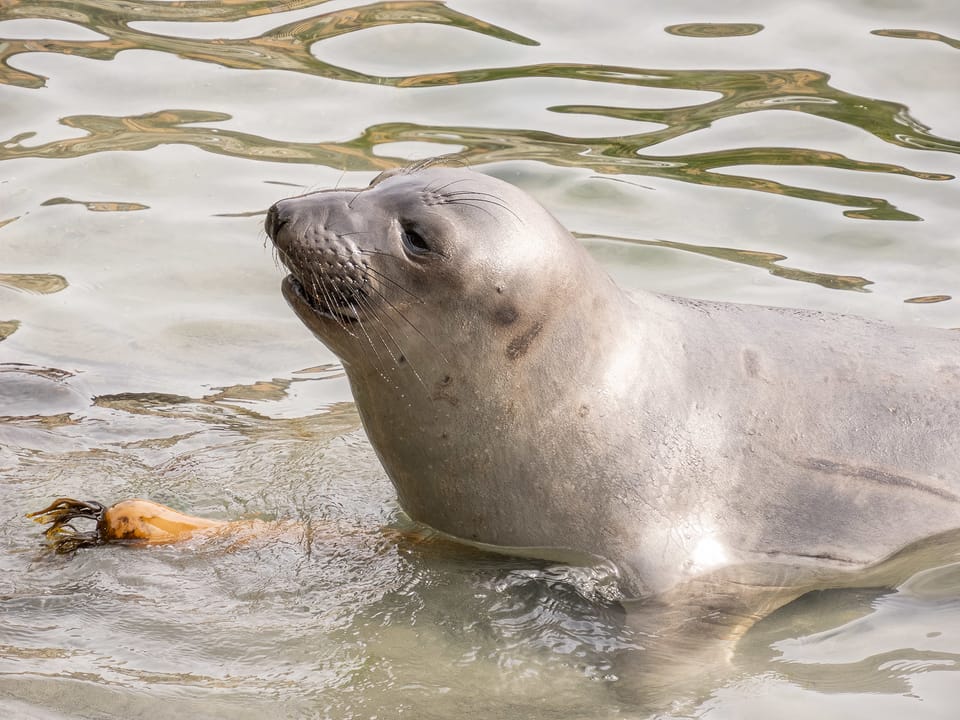EcoWest News, March 26, 2024

Welcome to EcoWest News, a weekly round-up of news and resources that you can put to use in addressing environmental issues and protecting the wild in your community.
Across the West
A former conservation officer provides insight into the controversy surrounding the number of bears killed each year in BC. [The Tyee]
A new report finds the price tag to treat water contaminated with selenium in BC’s Elk Valley could be $6.4 billion — more than three times the amount set aside to cover reclamation costs. [The Narwhal]
Experts emphasize the need to consider the impact low river flows and water levels could have on Alberta’s aquatic ecosystems, from insects and fish to apex predators, when reviewing water distribution options. [The Conversation]
Healthy forests support healthy watersheds. An ecosystem-based approach would allow Alberta to incorporate factors such as forest wetlands and drought conditions into its forest management practices. [Environmental Law Centre]
Across Canada
Motus, a cross-continental bird tracking system, has received a large grant to expand its capacity and ensure there are towers in strategic places. [USask]
Around the World
Iceland gets more than 70% of its energy from geothermal sources that are firmly embedded in a circular economy model, making use of water, heat, seawater, mineral-rich geothermal fluid, and more in businesses ranging from cosmetics to inland aquaculture. [The Energy Mix]
Proponents believe the next generation of nuclear power plants will be smaller, safer, and more efficient. Opponents argue they are unnecessary, still pose too many risks, and are taking too long to be developed. [Knowable]
Dark Skies International is offering a series of webinars during International Dark Sky Week, April 2-8. Topics include the impacts of artificial lights on insects; light, sleep, and circadian disruption; Navajo perspectives on the night sky; and astrophotography. [Dark Sky]
Citizen science data can be biased as it depends on who participates (more often white and wealthy) and where they are located (in cities, beside roads). The limitations can be addressed through stronger community connections. [Anthropocene]
Solar power uses a lot of space but can benefit land managers by balancing ecological and solar energy needs (e.g. taller panels for cattle grazing or planting seedlings under panels where there is more moisture). [The Conversation]
Water
Toronto’s waterfront project features a naturalized water channel, wetlands, meadows, and forest, providing flood-control management, filtration, ecological restoration, and green recreational areas. [American Society of Civil Engineers]
Making cities spongy could help fight flooding by directing the water underground, but it requires volume to be successful. [NPR]
Making a Difference
Trees and bushes planted near highways significantly reduce the air pollution from the soot and fine particles released by motor vehicles. [Futurity]
Researchers are exploring fungi’s potential in addressing pollution and waste, from turning derelict, toxic homes into clean bricks for new construction to cleaning up oil spills and post-wildfire clean-up. [BBC]
DIY
A step-by-step guide to how one couple got their home off fossil fuels. [Grist]
Patrons of West Vancouver Memorial Library can borrow mason bee cocoons to add these energetic pollinators to their garden. [Vancouver City News]
Nature’s Wonders
Roots make up half of most plants, and yet we know so little about roots, their impact on carbon sequestration, fungal and soil changes, crop hardiness and resiliency. [Smithsonian]
The earliest seals, sea lions, and walruses probably looked much like ancient weasels and bears. They swim by pushing their highly modified arms and legs against the water rather than swaying their backbone like whales or otters. They also live on both land and sea. [Smithsonian]
Photo credit: https://www.flickr.com/photos/apmckinlay/53214458933
EcoFriendly West informs and encourages initiatives that support Western Canada’s natural environment through its online publication and the Nature Companion website/app. Like us on Facebook, follow us on Twitter or Mastodon, or subscribe by email.

Member discussion